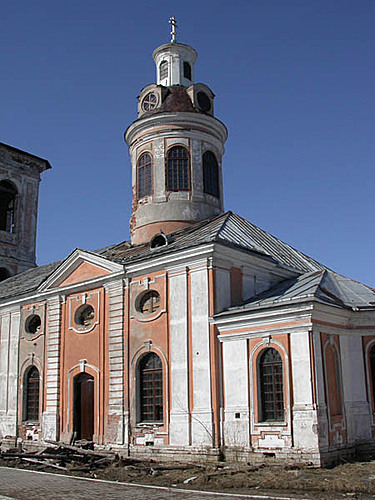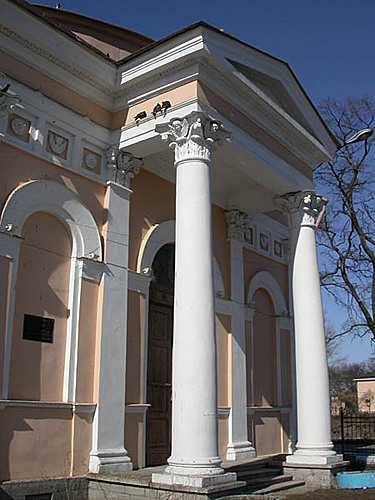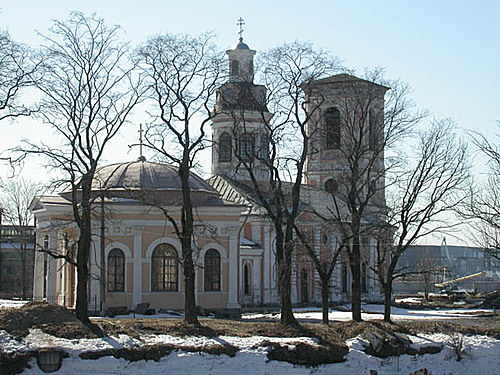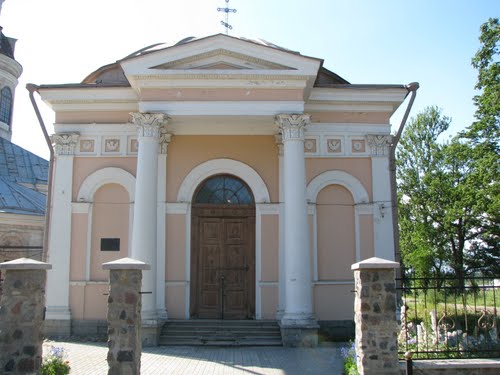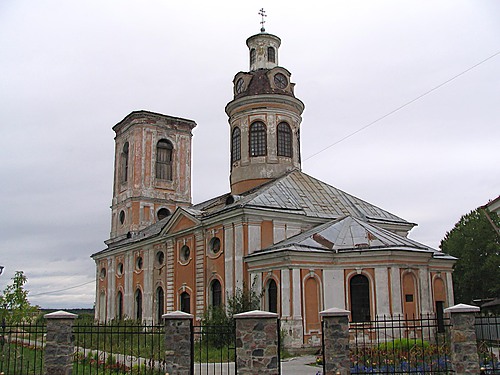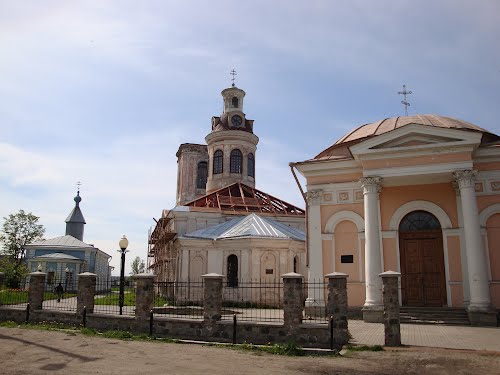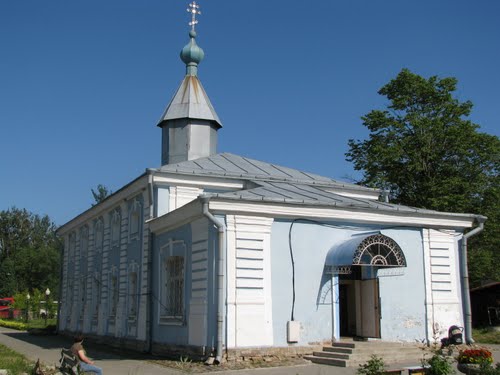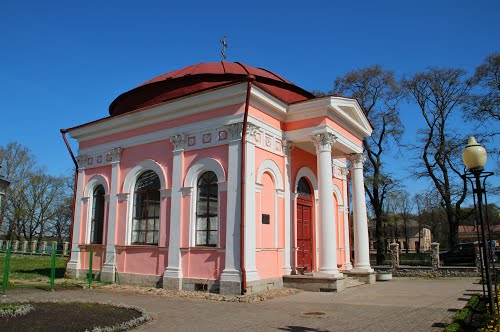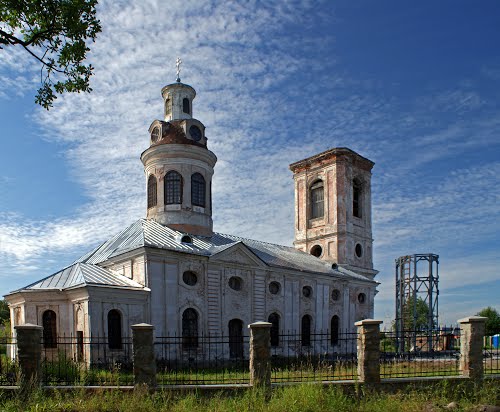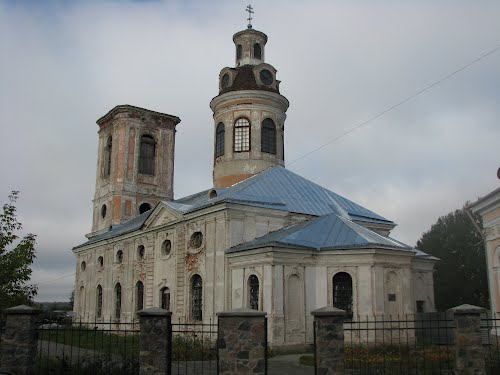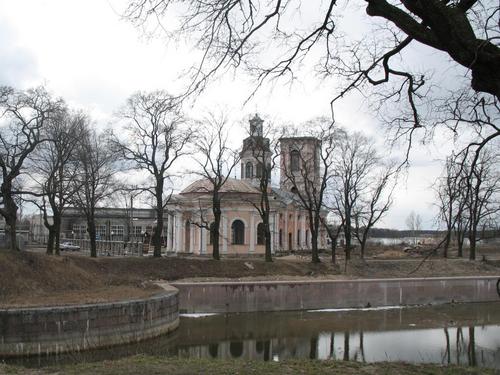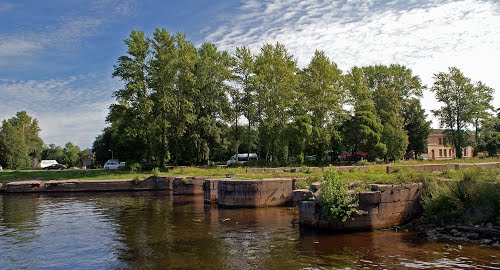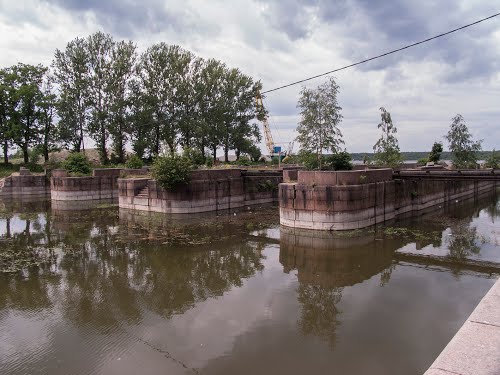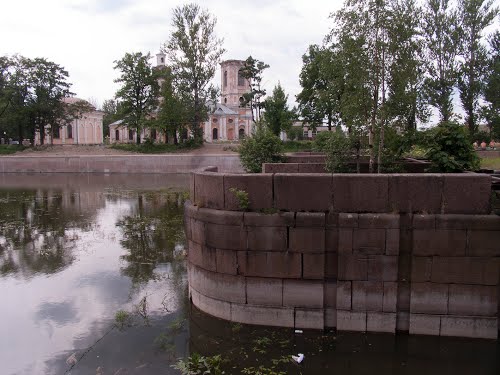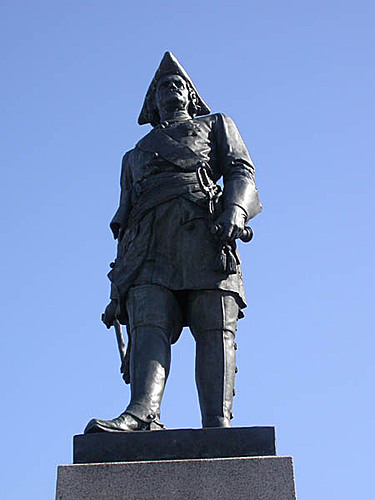Shlisselburg is a town in Kirovsky District of Leningrad Oblast, Russia, located at the head of the Neva River on Lake Ladoga, 35 km east of St. Petersburg. From 1944 to 1992, it was known as Petrokrepost.
The fortress and the town center are UNESCO World Heritage Sites.
History
Town
The town on the mainland opposite the island fortress was founded in 1702 by Peter the Great. In the course of Peter's administrative reform, Shlisselburg was included into Ingermanland Governorate. In 1727, it became a part of Sankt-Petersburgsky Uyezd, and in 1755 Shlisselburgsky Uyezd was established. In 1914, Sankt-Peterburgsky Uyezd was renamed Petrogradsky Uyezd. On February 14, 1923, Shlisselburgsky Uyezd was merged into Petrogradsky Uyezd. In January 1924, the uyezd was renamed Leningradsky. St. Petersburg Governorate was twice renamed, first Petrograd Governorate and subsequently Leningrad Governorate.
On August 1, 1927, the uyezds were abolished. Shlisselburg was made a town of okrug significance and belonged to Leningrad Okrug. On August 19, 1930, Leningradsky Prigorodny District, with the administrative center in Leningrad, was established. On August 19, 1936, the district was abolished and Shlisselburg became the town of oblast significance.
During World War II, the town (but not the fortress) was seized by German troops. German occupation lasted from September 8, 1941 to January 18, 1943. The recapture of Shlisselburg in January 1943 by the Red Army reopened access to besieged Leningrad. In 1944, the town's name was changed to Petrokrepost. Shlisselburg regained its former name in 1992.
In 2010, the administrative structure of Leningrad Oblast was harmonized with its municipal structure, and Shlisselburg became a town of district significance, subordinated to Kirovsky District.
Architecture
The town does not retain many historical buildings, apart from a handful of 18th-century churches. Perhaps the most remarkable landmark is the Old Ladoga Canal, started at the behest of Peter the Great in 1719 and completed under the guidance of Fieldmarshal Munnich twelve years later. The canal stretches for 111 km, its granite sluices date from 1836.

